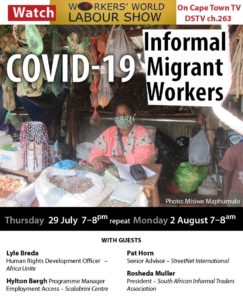By Lenny Gentle
Adopted by the ANC and its fellow Congress Alliance partners at Kliptown in 1955 the Freedom Charter has been a rallying symbol and inspiration for many activists for decades. But it has as well been a source of divisions within the liberation movement – the PAC, for instance, split from the ANC in 1957 saying that the Freedom Charter represented the domination of white liberalism over the ANC. And at COSATU’s 1987 Congress the debate as to whether COSATU should adopt the Freedom Charter was one of the hottest and most divisive in its history – as some unions wanted to align COSATU with the ANC and others warned that what was needed was a Workers’ Charter which would focus COSATU on its goal of winning socialism.
Today, the ANC claims that policies such as the 1996 GEAR policy and the National Development Plan are merely vehicles to realise the vision of the Charter. On the other hand, organisations such as the EFF and SAFTU criticise the ANC government for having sold out on the promises of the Freedom Charter. Meanwhile, for many activists struggling for housing, for a living wage, for the liberation of women and for decolonising education, the Freedom Charter no longer inspires and seems to be little more than rhetoric spouted by government apologists.
So for activists, today it is very appropriate that a new documentary on the Freedom Charter, Freedom Isn’t Free, has just been produced by Workers’ World Media and was shown at the Encounters film festival.
Freedom Isn’t Free is an excellent film which challenges the stories we get told everyday about how, after the victory over apartheid and the negotiated settlement led by the ANC, we live in the best of all times, in a constitutional order in which we have human rights and a political leadership who have our best interests at heart.
The film cleverly intersperses footage from the original 1955 Kliptown gathering at which the Freedom Charter was adopted with current struggles and events – the 2015 student #FeesMustFall movement, the Marikana massacre of 2012 and the ongoing community protests all over the country today. It also shows the debates in COSATU at its 1987 National Congress when it adopted the Charter.
By moving back and forth in time this way the film is not a history film about the past – lecturing today’s activists about the glorious anti-apartheid movement – but a film encouraging us to debate our struggles today and how it is possible that mass struggles of the past could end up with a black government today which has not improved the lives of the black majority. It is clearly a film to get activists debating this question and seeking answers.
The film contrasts the democracy and mass politics of the mid 1950s – where millions of people were encouraged to write their demands for a new South Africa on pieces of paper to be collated at a mass rally in Kliptown – with the language of government today with its top-down policies of appealing to investors and scolding striking workers and Fallists for being too demanding and militant. We see ANC and SACP ministers attacking students, we see interviews with Cyril Ramaphosa, the trade unionist criticising capitalism… followed by images of him being the billionaire he is today rubbing shoulders with the white monopoly companies that dominate South Africa.
We also see activists today involved in land struggles, against evictions and for free education who express their anger at the policies of the government who now is on the other side of the fence of activism and mass struggle. In so doing it tells us that the ANC has betrayed the letter and spirit of the Freedom Charter. One of the strongest features is the way the film takes a demand from the Charter and then compares it with the reality of South Africa today.
It very successfully uses the voices of a range of South Africans – activists, political commentators, ANC and SACP politicians and veterans to track the journey of the ANC – from a peoples’ movement in the 1950s to the ruling party of neoliberal South Africa today.
It is all filmed in such a way that it is like a collection of chapters in a series – allowing viewers to take sections that can be viewed separately – and it is not required that we have to watch it all in one sitting. This makes it possible that the makers may make it available in different forms suitable for different needs – from people who simply want to watch it as a complete documentary of our journey in South Africa, to local community and workers’ forums who want to put our current struggles in context.
Less successfully Freedom Isn’t Free does not challenge some of the politics of the Freedom Charter itself – why it was adopted by separate racial organisations, why it had little to say about how struggles should go forward to achieve power and how it was that a mass campaign to collect demands could end up in a document that was drafted by a committee and adopted with little discussion. And why it can still be used today – both by current ANC government apologists and critics of the ANC’s neo-liberalism. What is it about the Charter that allows itself to be so flexible in its meaning – is this its strength or a weakness? …but that is possibly the subject of another, very different, film.
That said, Freedom Isn’t Free should be compulsory viewing by everyone wanting to know how we ended up here from there.
Originally published in Elitsha
